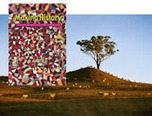National Centre for History Education ? Hyperhistory - the website of resources for teachers and students of history in Australian primary and secondary schools.
Get Started for FREE
Sign up with Facebook Sign up with X
I don't have a Facebook or a X account

 Your new post is loading... Your new post is loading...
 Your new post is loading... Your new post is loading...

Catherine Smyth's curator insight,
May 2, 2013 8:41 PM
This idea oozes with the MOTIVATION and ENGAGEMENT factor for learning. Boundless possiblities for history.

Catherine Smyth's curator insight,
April 23, 2013 2:13 AM
An innovative project designed to support the making of class movies and documentaries. |
Emma McPherson's curator insight,
May 1, 2016 10:26 PM
Stimulating classroom discussion on historical events can be tricky - a guide to creating a student debate, specific to history classrooms/digital spaces.

Maree Whiteley's curator insight,
March 9, 2013 3:07 AM
Students use critical thinking skills to collect, evaluate and analyze content; they may identify trends from discourse; they develop writing skills in original expression; and they interact, communicate and publish to a global audience. But perhaps more importantly, students practice digital citizenship and personal responsibility to lifelong learning...love it! 
Catherine Smyth's curator insight,
March 11, 2013 7:07 PM
I think the scope for Scoop it is sensational. It's a great way to organise, filter, select and highlight online digital resources around a topic, theme or idea.

Education Creations's curator insight,
June 5, 2014 9:05 PM
Use Voicethread and historical photographs to create digital historical narratives. Much more engaging than the written version.

Catherine Smyth's curator insight,
September 12, 2014 2:06 AM
This interactive game helps students develop an understanding of evidence (a concept addressed in the new Australian Curriculum:history). It requires the analysis of both primary and secondary sources to answer the question of inquiry "how did this man die?" |

















Essential reading, accessible research, practical ideas for teaching history in primary classrooms. Dip in to the The Teachers' Guide, 'Making History: a guide for the teaching and learning of history in Australian schools'.